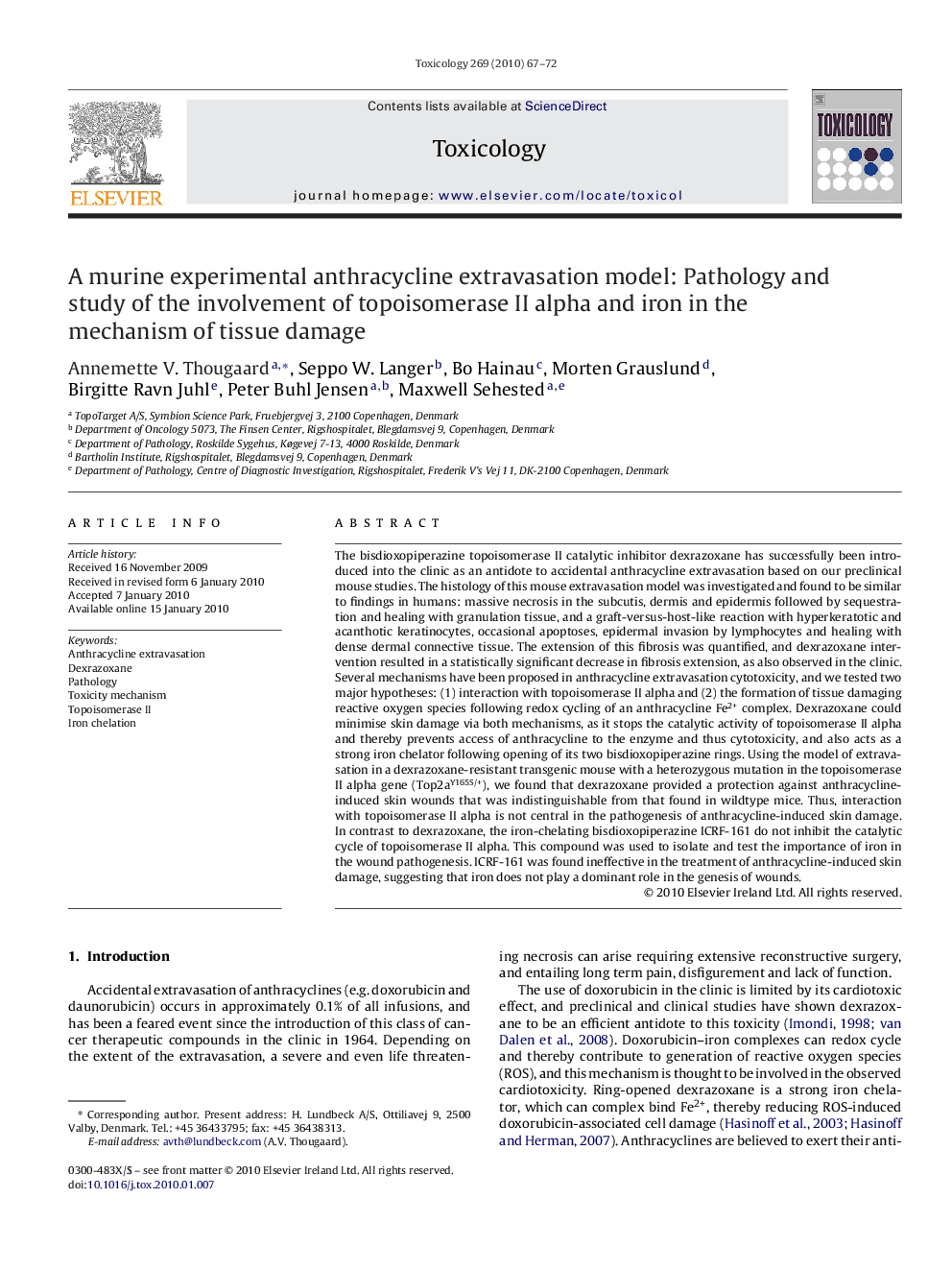| کد مقاله | کد نشریه | سال انتشار | مقاله انگلیسی | نسخه تمام متن |
|---|---|---|---|---|
| 2596604 | 1132537 | 2010 | 6 صفحه PDF | دانلود رایگان |

The bisdioxopiperazine topoisomerase II catalytic inhibitor dexrazoxane has successfully been introduced into the clinic as an antidote to accidental anthracycline extravasation based on our preclinical mouse studies. The histology of this mouse extravasation model was investigated and found to be similar to findings in humans: massive necrosis in the subcutis, dermis and epidermis followed by sequestration and healing with granulation tissue, and a graft-versus-host-like reaction with hyperkeratotic and acanthotic keratinocytes, occasional apoptoses, epidermal invasion by lymphocytes and healing with dense dermal connective tissue. The extension of this fibrosis was quantified, and dexrazoxane intervention resulted in a statistically significant decrease in fibrosis extension, as also observed in the clinic. Several mechanisms have been proposed in anthracycline extravasation cytotoxicity, and we tested two major hypotheses: (1) interaction with topoisomerase II alpha and (2) the formation of tissue damaging reactive oxygen species following redox cycling of an anthracycline Fe2+ complex. Dexrazoxane could minimise skin damage via both mechanisms, as it stops the catalytic activity of topoisomerase II alpha and thereby prevents access of anthracycline to the enzyme and thus cytotoxicity, and also acts as a strong iron chelator following opening of its two bisdioxopiperazine rings. Using the model of extravasation in a dexrazoxane-resistant transgenic mouse with a heterozygous mutation in the topoisomerase II alpha gene (Top2aY165S/+), we found that dexrazoxane provided a protection against anthracycline-induced skin wounds that was indistinguishable from that found in wildtype mice. Thus, interaction with topoisomerase II alpha is not central in the pathogenesis of anthracycline-induced skin damage. In contrast to dexrazoxane, the iron-chelating bisdioxopiperazine ICRF-161 do not inhibit the catalytic cycle of topoisomerase II alpha. This compound was used to isolate and test the importance of iron in the wound pathogenesis. ICRF-161 was found ineffective in the treatment of anthracycline-induced skin damage, suggesting that iron does not play a dominant role in the genesis of wounds.
Journal: Toxicology - Volume 269, Issue 1, 28 February 2010, Pages 67–72